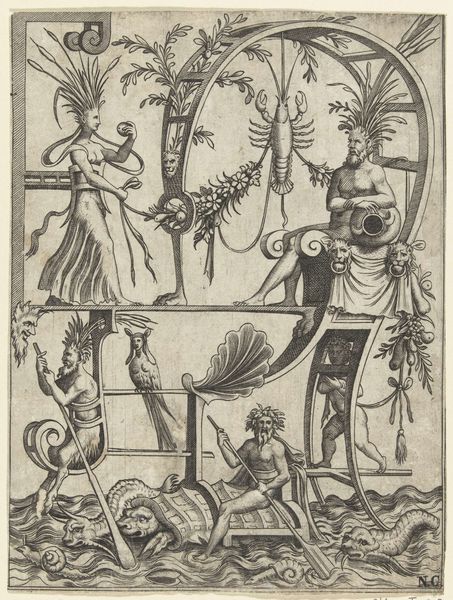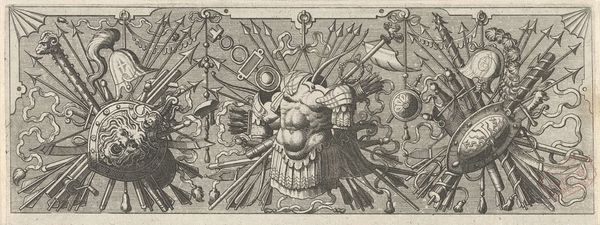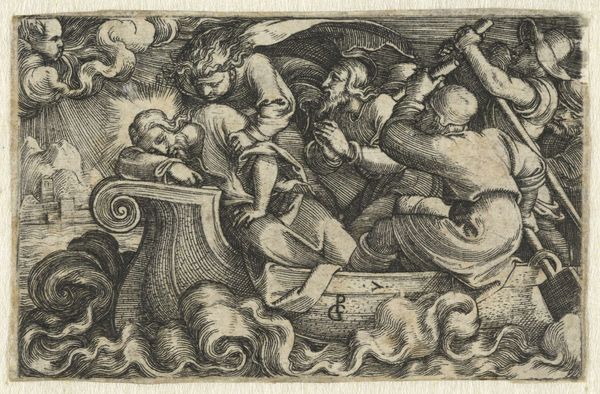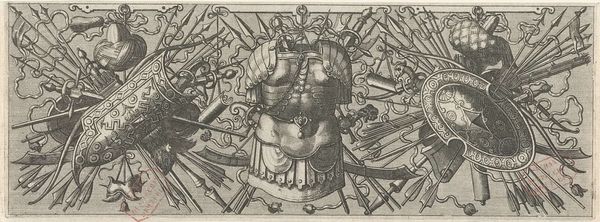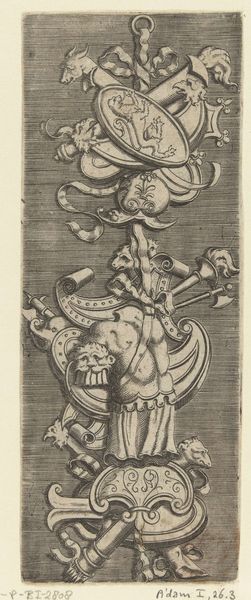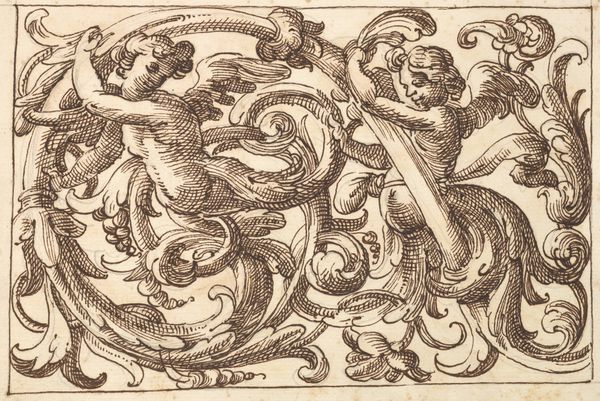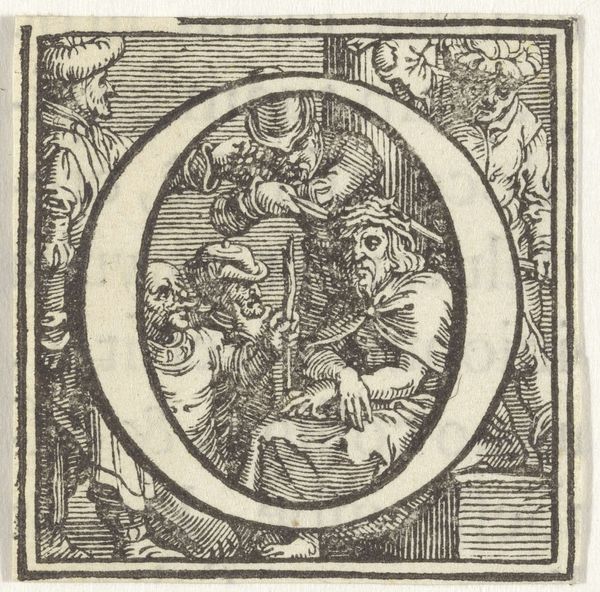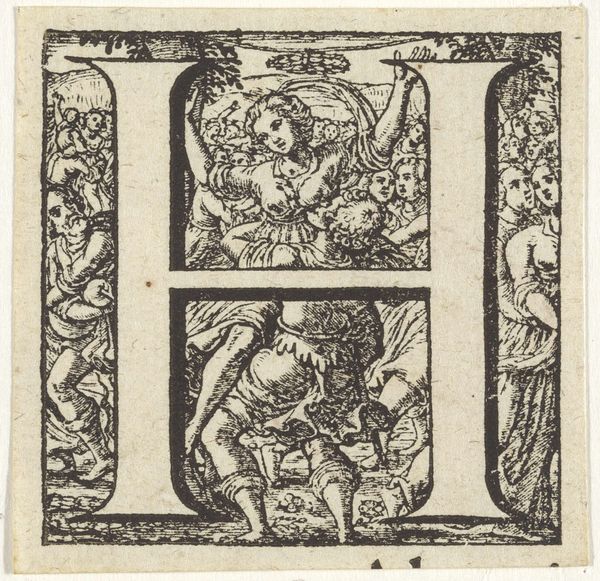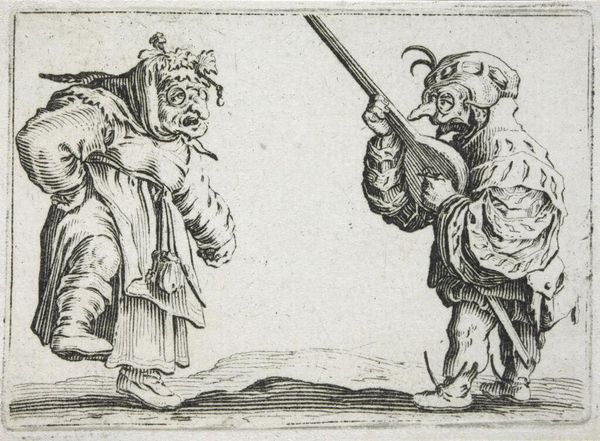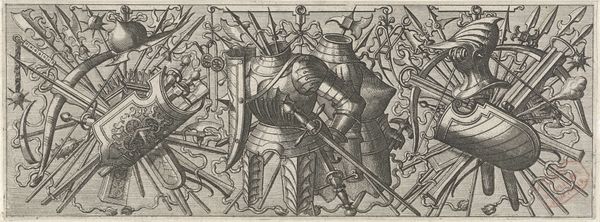
Fries met wapens, een geboeide man (krijgsgevangene of slaafgemaakte) en twee oosterse figuren 1583 - 1638
0:00
0:00
drawing, print, metal, engraving
#
drawing
#
baroque
#
pen drawing
# print
#
metal
#
line
#
academic-art
#
engraving
Dimensions: height 64 mm, width 265 mm
Copyright: Rijks Museum: Open Domain
Curator: What a fascinating image! We’re looking at "Fries met wapens, een geboeide man (krijgsgevangene of slaafgemaakte) en twee oosterse figuren," an engraving attributed to Odoardo Fialetti, dating from 1583 to 1638, currently residing at the Rijksmuseum. Editor: It strikes me as rather chaotic at first glance. A jumble of forms, seemingly competing for attention within a tightly confined space. Curator: Indeed. These “trophies,” or heaps of arms, signify power, dominance. But it’s not straightforward glory. See how the central figure, the bound man, acts as a reminder of conquest’s human cost. These arrangements, popularized during the Renaissance and Baroque periods, celebrated military triumph while, implicitly, acknowledging its consequences. The inclusion of figures perceived as "oriental" at the time layers on themes of cultural conflict and the "other." Editor: I’m intrigued by the linear precision. The engraver's skill renders these objects with sharp detail, almost fetishizing them. The lines define the texture of the metal, the folds of fabric... each component, distinct, yet crammed together, produces an uneasy harmony, a decorative order imposed on violent themes. Curator: Precisely. Think of these lines as chains too, both aesthetically holding the piece together and conceptually linking motifs of war and its human cost. The piece reflects an established tradition that presents conquest, and by extension, violence, within a controlled aesthetic framework, attempting to impose order on chaos. Editor: Yet that "control," I would argue, highlights its opposite. The composition almost feels on the verge of collapse, the arrangement so dense that it threatens to spill over. It is within this tension between meticulous execution and latent chaos that the artwork gains its force. Curator: The artist uses a formalized, symbolic language here, one easily legible to its original audience, speaking volumes about cultural perceptions of power and the subjugated other. It asks: how do we frame victory when it's intrinsically linked to suffering? Editor: I agree. And for me, the lasting impact lies in the technical mastery coupled with that compositional anxiety. A stunning example of how form and content can complicate one another. Curator: Absolutely. By delving into its imagery and history, we unearth layers of cultural narratives embedded in its linear details.
Comments
No comments
Be the first to comment and join the conversation on the ultimate creative platform.




